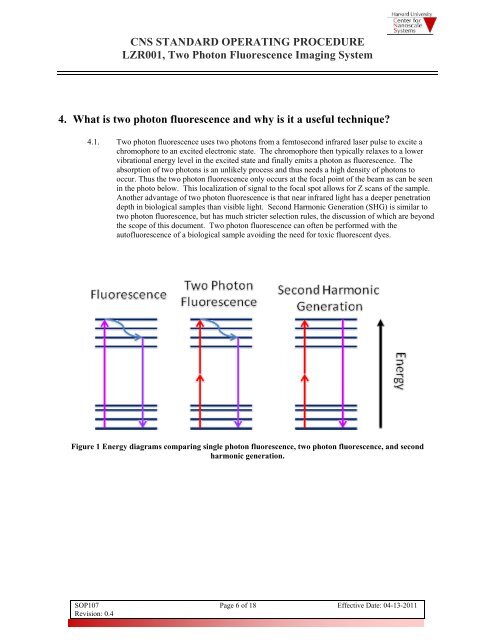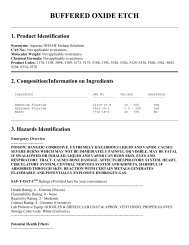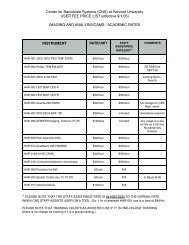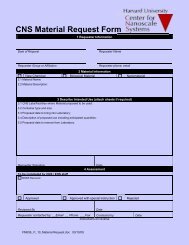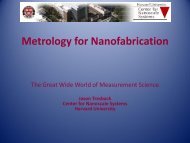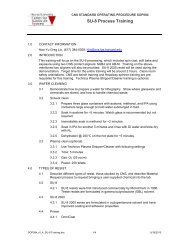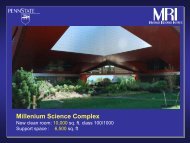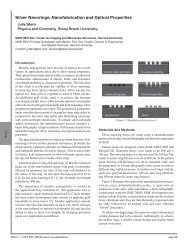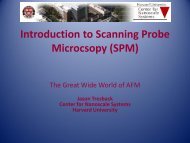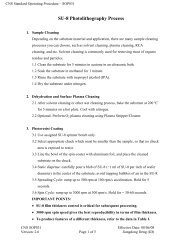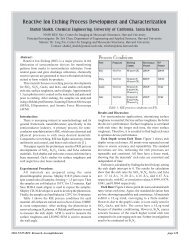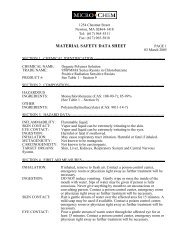CNS STANDARD OPERATING PROCEDURE Two Photon ...
CNS STANDARD OPERATING PROCEDURE Two Photon ...
CNS STANDARD OPERATING PROCEDURE Two Photon ...
You also want an ePaper? Increase the reach of your titles
YUMPU automatically turns print PDFs into web optimized ePapers that Google loves.
<strong>CNS</strong> <strong>STANDARD</strong> <strong>OPERATING</strong> <strong>PROCEDURE</strong>LZR001, <strong>Two</strong> <strong>Photon</strong> Fluorescence Imaging System4. What is two photon fluorescence and why is it a useful technique?4.1. <strong>Two</strong> photon fluorescence uses two photons from a femtosecond infrared laser pulse to excite achromophore to an excited electronic state. The chromophore then typically relaxes to a lowervibrational energy level in the excited state and finally emits a photon as fluorescence. Theabsorption of two photons is an unlikely process and thus needs a high density of photons tooccur. Thus the two photon fluorescence only occurs at the focal point of the beam as can be seenin the photo below. This localization of signal to the focal spot allows for Z scans of the sample.Another advantage of two photon fluorescence is that near infrared light has a deeper penetrationdepth in biological samples than visible light. Second Harmonic Generation (SHG) is similar totwo photon fluorescence, but has much stricter selection rules, the discussion of which are beyondthe scope of this document. <strong>Two</strong> photon fluorescence can often be performed with theautofluorescence of a biological sample avoiding the need for toxic fluorescent dyes.Figure 1 Energy diagrams comparing single photon fluorescence, two photon fluorescence, and secondharmonic generation.SOP107Revision: 0.4Page 6 of 18 Effective Date: 04-13-2011


